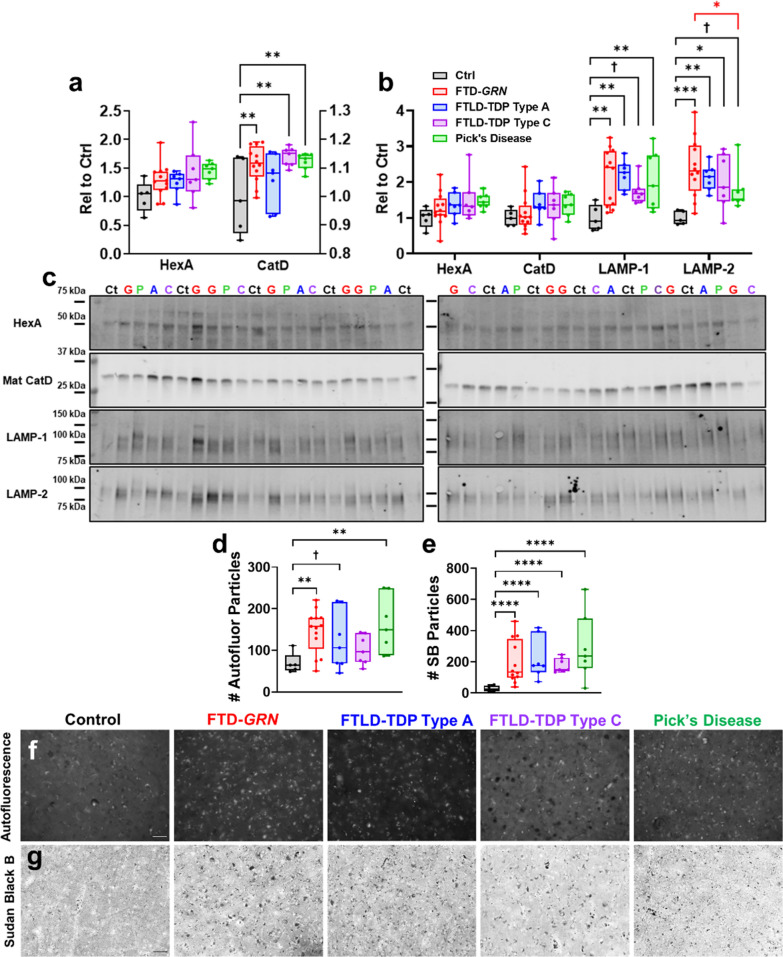Fig. 5.
Similar lysosomal protein changes and storage material accumulation in frontal cortex of patients with multiple FTLD subtypes. Frontal cortex from patients with FTD-GRN, FTLD-TDP type C, or Pick’s Disease exhibited increased CatD activity versus controls (a, ANOVA effect of group, p = 0.0109). HexA activity was not significantly different from controls (ANOVA effect of group, p = 0.1079), though all FTLD groups exhibited trends for increased activity. b, c All FTLD patient groups also exhibited at least trends for elevated levels of LAMP-1 (ANOVA effect of group, p = 0.013) and LAMP-2 (ANOVA effect of group, p = 0.0059). d, e Patients with FTD-GRN and Pick’s disease exhibited higher numbers of autofluorescent particles compared to controls, and patients with FTLD-TDP type A exhibited a similar trend (ANOVA effect of group, p = 0.0254). f, g All FTLD patient groups had higher numbers of Sudan Black B-positive particles than controls (ANOVA effect of group, p < 0.0001). In a HexA data are scaled to the left y-axis and CatD data are scaled to the right y-axis. †p < 0.1, *p < 0.05, **p < 0.01, ***p < 0.001, and ****p < 0.0001 by Fisher’s LSD post-hoc test. Black lines and symbols indicate difference from controls. The red line and symbol in b indicate difference from FTD-GRN. n = 5 controls, 12–13 patients with FTD-GRN, 7 patients with FTLD-TDP type A, 7 patients with FTLD-TDP type C, and 7 patients with Pick’s disease. Abbreviations for c are: Ct = control, G = FTD-GRN, A = FTLD-TDP type A, C = FTLD-TDP type C, P = Pick’s disease. Scale bars in f and g represent 50 μm

